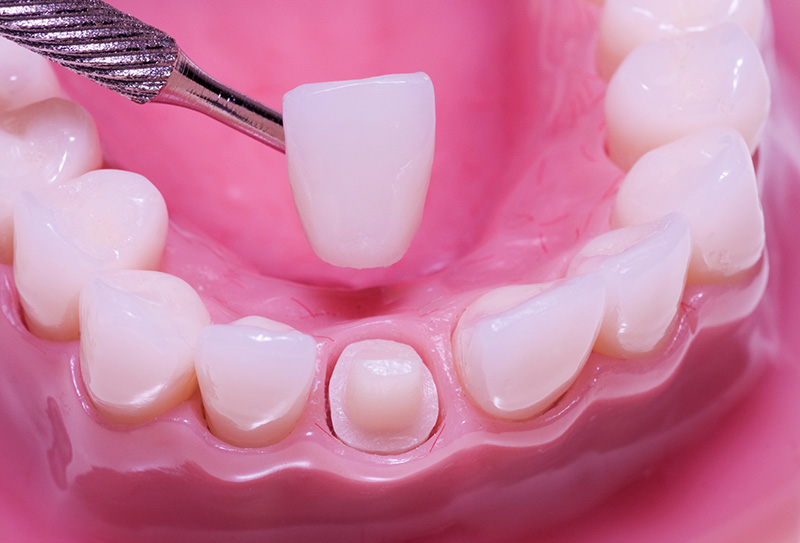Dental Crowns New Westminster
Crowns are required for a variety of reasons. Most frequently, when a tooth has been filled several times the size of the filling compared to the remaining tooth is quite large. This increases the chance of fracture and possible tooth loss. Also, crowns can also be used to restore proper shape, size and esthetics to a tooth. Improper tooth shape can lead to food impaction and subsequent gum issues.
The treatment for a crown involves two appointments. (Single appointment crowns are available, however the quality and longevity of these crowns is debatable due to the fact they are a relatively new technology. As a result the crowns we do in our office are all processed by highly trained laboratory technicians as we feel this is in the best interest of the patient). In the first appointment:
- An initial impression is taken to make the temporary crown at the end of the appointment
- The patient is frozen using local anasthetic
- Often, a filling or “build-up” is placed in the tooth to remove decay prior to beginning the crown preparation
- The tooth is reduced in size by approximately 1.5mm around the entire circumference of the tooth (to provide adequate space for the material of the crown)
- An impression is taken of the tooth using a high accuracy material that captures all aspects of the reduced tooth. This impression is sent away to a lab where it is used to fabricate the crown. Because of the high accuracy of the impression material the lab technician is able to design the crown to fit very precisely, while also providing for an ideal bite and tooth shape/esthetics.
- Once the impression is taken, the temporary crown is fabricated using the impression from the beginning of the appointment. This temporary crown is cemented in place with temporary cement allowing it to be easily removed on the day the permanent crown is inserted.
- The bite is checked and refined.
On the day of the second appointment:
- The patient is frozen using local anasthetic, unless the tooth already has a root canal on it, in which case freezing is not required.
- The temporary crown is removed and the tooth underneath is cleaned
- The permanent crown is tried in temporarily to check for bite, fit and esthetics.
- If the above step is successful the crown is inserted permanently using cement.
This cement usually takes about an hour to set completely after which time the crown functions as a regular tooth.
Crowns can be fabricated from a variety of materials depending on the clinical condition and the patient needs/desires. In esthetic regions crowns can be made entirely from porcelain or porcelain fused on top of metal. In posterior regions, for patients with a heavy bite or who grind, we often recommend gold crowns. This material tends to withstand the forces of chewing better/longer than porcelain, however porcelain crowns are also a valid option in the posterior region when esthetics are a concern. At the end of the day various options are available to suit all patient desires and clinical applications.
Contact New West Dentistry & Implant Centre today for more information on our crown treatments or to book an appointment.


